Resources
Miscellaneous Gear
There are a multitude of tools ghost hunters use to aid their investigations. Some tools are repurposed, pre-existing items that operate on known scientific principles and detect naturally occurring phenomena, while other tools are tailor-made for ghost hunting and operate on the numerous theories about paranormal phenomena. Investigators use this equipment in two ways: To help debunk activity when possible, and to provide additional context for our experiences during investigations. Select each of the three categories below to see what we use.
Click on thumbnails to view larger images.
Ghost Hunting Equipment | Filming Equipment | Misc. Gear
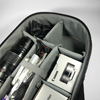 Camera Case — If you're running any sort of camera setup beyond your smart phone or a small
point-and-shoot, you're probably going to want something better than a pocket or backpack to protect that expensive
piece of hardware. Having a dedicated camera case allows you to keep all your camera-related stuff together, along
with extra batteries, charging cables, different lenses, and whatever else you might want to bring along on your
investigations. We just have this case,
purchased from Amazon, but we're already in need of an upgrade!
Camera Case — If you're running any sort of camera setup beyond your smart phone or a small
point-and-shoot, you're probably going to want something better than a pocket or backpack to protect that expensive
piece of hardware. Having a dedicated camera case allows you to keep all your camera-related stuff together, along
with extra batteries, charging cables, different lenses, and whatever else you might want to bring along on your
investigations. We just have this case,
purchased from Amazon, but we're already in need of an upgrade!
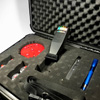 Hard Case with Pick and Pluck Foam Inserts — All this ghost hunting gear is expensive,
so you really ought to have a case that can protect it (and keep it all together!). This will likely be one of
the items in your kit that you upgrade or add to regularly as your collection of equipment grows. Not only
does it need to be able to hold everything and protect it from general handling, it should also be robust enough
to handle heavy duty handling like checked luggage at an airport. This means having the ability to be locked with
some kind of surface space for identifying labels. Even if it's small enough for carry-on, you might get some
push back from TSA on the weird tech you're trying to bring on board. So it's a good idea to just plan for your
equipment to stowed away on flights, and you'll need a case that can handle that kind of rough handling. And even
if you don't fly, having that same kind of case will be useful in the less well-manicured haunted locations.
Currently we have this one
from Amazon, but it's already needs a larger replacement.
Hard Case with Pick and Pluck Foam Inserts — All this ghost hunting gear is expensive,
so you really ought to have a case that can protect it (and keep it all together!). This will likely be one of
the items in your kit that you upgrade or add to regularly as your collection of equipment grows. Not only
does it need to be able to hold everything and protect it from general handling, it should also be robust enough
to handle heavy duty handling like checked luggage at an airport. This means having the ability to be locked with
some kind of surface space for identifying labels. Even if it's small enough for carry-on, you might get some
push back from TSA on the weird tech you're trying to bring on board. So it's a good idea to just plan for your
equipment to stowed away on flights, and you'll need a case that can handle that kind of rough handling. And even
if you don't fly, having that same kind of case will be useful in the less well-manicured haunted locations.
Currently we have this one
from Amazon, but it's already needs a larger replacement.
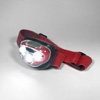 Head Lamps — Most investigations involve some kind of low-light conditions, but the reality
is sometimes you just need a light to see where you're going or what you're doing. If you're in a dilapidated
structure, having a head lamp could save yourself a headache when you spot that piece of rebar sticking out of the
wall, and that head lamp could make battery changes go a lot faster when you are digging through your bag in the dark.
Your eyes generally adjust to the dark after a while, so you may never even turn it on. But a head lamp is one of
those items that is better to have and not need it, than to need it and not have it. These can be generally be found
wherever you can buy flashlights. We tend to gravitate toward
Home Depot's selection.
Head Lamps — Most investigations involve some kind of low-light conditions, but the reality
is sometimes you just need a light to see where you're going or what you're doing. If you're in a dilapidated
structure, having a head lamp could save yourself a headache when you spot that piece of rebar sticking out of the
wall, and that head lamp could make battery changes go a lot faster when you are digging through your bag in the dark.
Your eyes generally adjust to the dark after a while, so you may never even turn it on. But a head lamp is one of
those items that is better to have and not need it, than to need it and not have it. These can be generally be found
wherever you can buy flashlights. We tend to gravitate toward
Home Depot's selection.
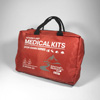 First Aid Kit — Let's face it, plenty of would-be ghost hunters are going to investigate
some dangerous locations. Uneven floor boards, loose steps, piles of debris, rusty filing cabinets and even just
mildly abrasive decayed surfaces can cause all sort of injuries. Being able to clean up and dress minor injuries
on the spot can keep you going, and even if an injury ends the investigation, that on-the-spot triage can help
that late-night emergency room run go just a little bit smoother. You can find these practically anywhere, but
stores that carry camping gear
tend to have better variety with lighter pack weight.
First Aid Kit — Let's face it, plenty of would-be ghost hunters are going to investigate
some dangerous locations. Uneven floor boards, loose steps, piles of debris, rusty filing cabinets and even just
mildly abrasive decayed surfaces can cause all sort of injuries. Being able to clean up and dress minor injuries
on the spot can keep you going, and even if an injury ends the investigation, that on-the-spot triage can help
that late-night emergency room run go just a little bit smoother. You can find these practically anywhere, but
stores that carry camping gear
tend to have better variety with lighter pack weight.
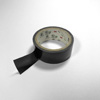 Tape — You never know when you'll need to fasten something together in the field. It could
be a broken tripod leg, or a GoPro camera that just keeps getting knocked off a ledge for some (ghostly) reason.
Vinyl electrical tape is a good option if you anticipate needing to tape up your expensive gear or need to put tape
on a piece of the client's property as it shouldn't leave much of a residue. But we recommend an actual work-horse
type of tape, like
Gaffer tape (NOT duct tape) if you want it to do some heavy duty work for you.
Tape — You never know when you'll need to fasten something together in the field. It could
be a broken tripod leg, or a GoPro camera that just keeps getting knocked off a ledge for some (ghostly) reason.
Vinyl electrical tape is a good option if you anticipate needing to tape up your expensive gear or need to put tape
on a piece of the client's property as it shouldn't leave much of a residue. But we recommend an actual work-horse
type of tape, like
Gaffer tape (NOT duct tape) if you want it to do some heavy duty work for you.
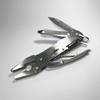 Pocket Knife / Multi-Tool — Referring back to the Hard Case entry above, this item won't go
over well with TSA when flying, of course. But for most of your investigations, it's always a good idea to have some
kind of knife or multi-tool in your kit for field repairs. Of course, if your investigation is part of some event
with venue rules, we urge you to observe whatever rules they might have with regards to knives. This is another one
of those items that's better to have it and not need it, than to need it and not have it.
Pocket Knife / Multi-Tool — Referring back to the Hard Case entry above, this item won't go
over well with TSA when flying, of course. But for most of your investigations, it's always a good idea to have some
kind of knife or multi-tool in your kit for field repairs. Of course, if your investigation is part of some event
with venue rules, we urge you to observe whatever rules they might have with regards to knives. This is another one
of those items that's better to have it and not need it, than to need it and not have it.
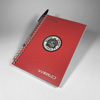 Notepad — Having a notepad dedicated to your investigation is a great addition to a kit for keeping track
of information from preliminary client interviews to jotting critical notes during an investigation (like descriptions and
timestamps of activity). If you aren't using any audio or video equipment where you can audibly tag an experience, being able to
write notes on the spot will help you remember that experience later on during a debriefing session. Use whatever works
best for you - we just have a little 5"x7" notebook.
Notepad — Having a notepad dedicated to your investigation is a great addition to a kit for keeping track
of information from preliminary client interviews to jotting critical notes during an investigation (like descriptions and
timestamps of activity). If you aren't using any audio or video equipment where you can audibly tag an experience, being able to
write notes on the spot will help you remember that experience later on during a debriefing session. Use whatever works
best for you - we just have a little 5"x7" notebook.
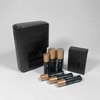 Extra Batteries — This should be a no-brainer, but bring extra batteries!!! It can seem wasteful
to change batteries for each investigation, but it's probably a good practice to get into with your equipment. Considering
the duration some investigations can have and the amount of time your equipment can sit in an active state, the practicality
alone warrants fresh batteries at the start of a new hunt. However, also considering the theory that paranormal activity can
drain power from electronic devices, you may find your batteries getting drained a lot faster than anticipated. Before each
investigation, you should assess your battery needs and stock up: AAA, AA, D-cell, coin batteries... whatever your equipment
takes. Additionally, if you have any extra camera batteries, have them charged and ready to go. We would
also recommend even adding phone chargers into the mix as well.
Extra Batteries — This should be a no-brainer, but bring extra batteries!!! It can seem wasteful
to change batteries for each investigation, but it's probably a good practice to get into with your equipment. Considering
the duration some investigations can have and the amount of time your equipment can sit in an active state, the practicality
alone warrants fresh batteries at the start of a new hunt. However, also considering the theory that paranormal activity can
drain power from electronic devices, you may find your batteries getting drained a lot faster than anticipated. Before each
investigation, you should assess your battery needs and stock up: AAA, AA, D-cell, coin batteries... whatever your equipment
takes. Additionally, if you have any extra camera batteries, have them charged and ready to go. We would
also recommend even adding phone chargers into the mix as well.